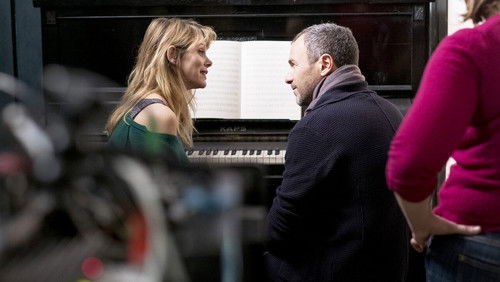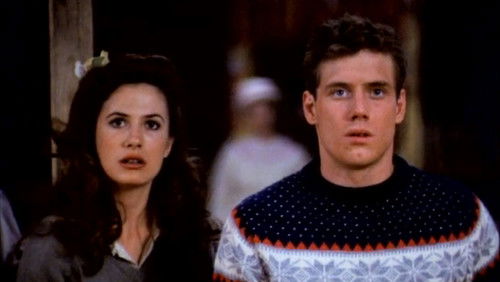The Hidden Blade – Das verborgene Schwert (2004)
45KThe Hidden Blade – Das verborgene Schwert: Directed by Yôji Yamada. With Masatoshi Nagase, Takako Matsu, Hidetaka Yoshioka, Yukiyoshi Ozawa. A 19th Century samurai, held in low esteem due to an action by his late father, must resolve his history with a maid and with his close friend.
“u0026quot;The Hidden Blade (Kakushi-ken: oni no tsume)u0026quot; is filmed in a deceptively old-fashioned and leisurely style to make pointed observations of Japanese society, much as u0026quot;Far From Heavenu0026quot; did for the U.S. u003cbr/u003eu003cbr/u003eDirector/co-writer Yôji Yamada again adapts Shuuhei Fujisawa stories as he did so beautifully in u0026quot;Twilight Samurai (Tasogare Seibei)u0026quot;. Taking place just a few years before Hollywoodu0026#39;s u0026quot;The Last Samuraiu0026quot;, this feels like a rebuke and response to that very Westernized interpretation of some of the same issues of how changes in military technology impacted feudalism and imperialism, as well as visually referencing many classic Japanese samurai films, but from a more individualized point of view then Kurosawa, Kobayashi or Inagakiu003cbr/u003eu003cbr/u003eThe first half of the film establishes the complicated domestic life and frustrating work of the struggling samurai (a solid and sympathetic Masatoshi Nagase, channeling Toshirô Mifune). The broadly comic scenes of fumbled rifles and cannon training recall similarities with the u0026quot;Sharpeu0026quot; TV series of the just a bit earlier Napoleonic wars. Particularly lovely are household hearth scenes of warmth between generations and between master and servants.u003cbr/u003eu003cbr/u003eBut this is not the idyllic village where Tom Cruise sojourned, as darker abuse is revealed and the samurai flaunts rigid social protocols to do right by those he cares for, especially the young maid u0026quot;Kieu0026quot; (Takako Matsu channeling the three little maids from u0026quot;The Mikadou0026quot; a bit too much). He is slow to reveal emotions or take action (the romance goes beyond Jane Austen in its cross-caste sidling and very slow resolution), suppressing vivid childhood memories we see very briefly in flashbacks in contrast to his voluble friend who rebels, including against traditional suicide.u003cbr/u003eu003cbr/u003eThe emphasis throughout the film is on generational conflict, as elders who are to be venerated are constantly shown to be fools or much worse — old uncles complain about younger people (whose names they canu0026#39;t keep straight) using the new Western weapons, but place a higher priority on eating; a mother-in-law viciously mistreats her daughter-in-law to increase profits; a corrupt senior retainer (the feudal titles do not seem well-translated in the subtitles) lies and manipulates while enjoying geishas and complaining about his prostate problems. But a teacher derided as a u0026quot;crazy old manu0026quot; who can still best the young swordsman passes on more useful stealth techniques than the martinet drill sergeant who has inherited the honorific u0026quot;senseiu0026quot; with his British guns.u003cbr/u003eu003cbr/u003eWhile as usual in such films, I simply cannot follow the Byzantine shogun politics even with a superfluous narration, as Iu0026#39;ve never studied Japanese political history, the second half ironically builds on the iconography of the genre with unusual sights and sounds. Macho conflicts are filmed voyeuristically, with sidling camera angles that indicate a passing from mano a mano duels to the anonymity of modern weapons, and thus justifying the use of the titular vengeance.u003cbr/u003eu003cbr/u003eThe exquisite cinematography and sound design create a special environment. With a look of faded epic cinematography like the passing of an age, we see snow falling on parasols, cherry blossoms on the path and rain fall on unrequited love. We hear them too, as the breezes, wind, crickets, birds, rain and the household sounds of tools and crackling fire punctuate long silences and dominate more than the conventionally soaring score that is used judiciously. But a prison and eventual bloody fights in a heavily symbolic fog are not minimalized.u003cbr/u003eu003cbr/u003eThe production design is much more elaborate in showing us traditional architecture than most such Japanese films. u003cbr/u003eu003cbr/u003eIu0026#39;m sure some of the social and historical commentary just goes by a Western audience unfamiliar with particulars, but the themes of individuals caught up in social proscriptions who rebel and seek love, respect, peace and, most of all, control over their lives is universal and very involving.”









